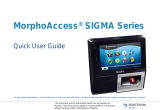xpr B100PAD-M is a biometric keypad reader that offers great flexibility and security for access control applications. With its capacity to store up to 100 fingerprints, programmable Wiegand output, and multiple authentication methods, it provides a reliable and convenient solution for various user requirements.
xpr B100PAD-M is a biometric keypad reader that offers great flexibility and security for access control applications. With its capacity to store up to 100 fingerprints, programmable Wiegand output, and multiple authentication methods, it provides a reliable and convenient solution for various user requirements.




















-
 1
1
-
 2
2
-
 3
3
-
 4
4
-
 5
5
-
 6
6
-
 7
7
-
 8
8
-
 9
9
-
 10
10
-
 11
11
-
 12
12
-
 13
13
-
 14
14
-
 15
15
-
 16
16
-
 17
17
-
 18
18
-
 19
19
-
 20
20
xpr B100PAD-M is a biometric keypad reader that offers great flexibility and security for access control applications. With its capacity to store up to 100 fingerprints, programmable Wiegand output, and multiple authentication methods, it provides a reliable and convenient solution for various user requirements.
Ask a question and I''ll find the answer in the document
Finding information in a document is now easier with AI
Related papers
Other documents
-
 XPR Group B100PROX-MF V1 User manual
XPR Group B100PROX-MF V1 User manual
-
ZKTeco F6 User manual
-
 Lenel OnGuard Hardware Installation Manual
Lenel OnGuard Hardware Installation Manual
-
Martec TLKD34510WD Operating instructions
-
Rosslare AX-NG User manual
-
XPR Group B100PAD-SA v2 User manual
-
Hikvision DS-K1T680DFW User manual
-
Hikvision DS-K1T671TMFW User manual
-
 Safran MA SIGMA Prox WR Quick User Manual
Safran MA SIGMA Prox WR Quick User Manual
-
eSSL INBIO160 User manual
























